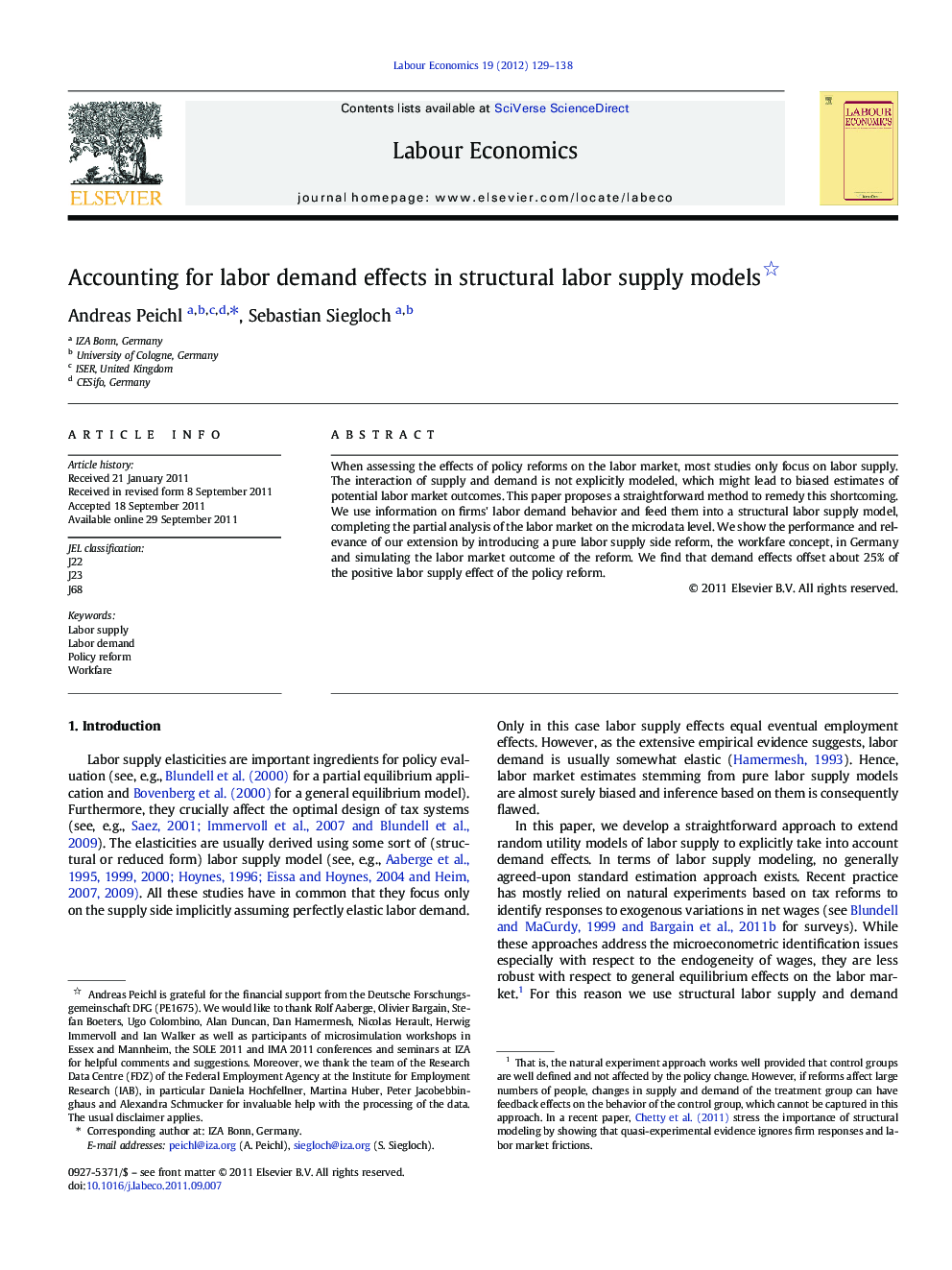| Article ID | Journal | Published Year | Pages | File Type |
|---|---|---|---|---|
| 971868 | Labour Economics | 2012 | 10 Pages |
When assessing the effects of policy reforms on the labor market, most studies only focus on labor supply. The interaction of supply and demand is not explicitly modeled, which might lead to biased estimates of potential labor market outcomes. This paper proposes a straightforward method to remedy this shortcoming. We use information on firms' labor demand behavior and feed them into a structural labor supply model, completing the partial analysis of the labor market on the microdata level. We show the performance and relevance of our extension by introducing a pure labor supply side reform, the workfare concept, in Germany and simulating the labor market outcome of the reform. We find that demand effects offset about 25% of the positive labor supply effect of the policy reform.
► We combine firms' labor demand with a structural labor supply model. ► This completes the partial analysis of the labor market on microdata level. ► We show the relevance of our extension by introducing workfare in Germany. ► We find that demand effects offset about 25% of the positive labor supply effects. ► Our approach makes predictions and ex-ante policy recommendations more reliable.
